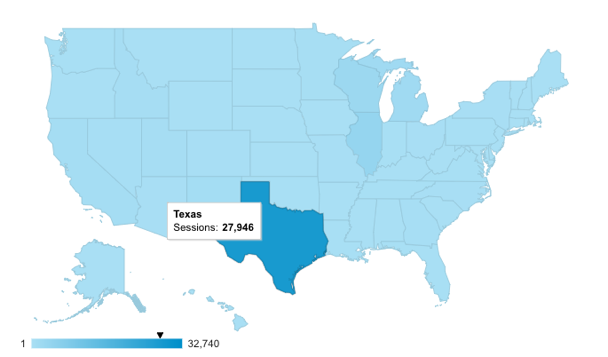“Why is PPC performance so different from August to September?”
These are the kinds of questions, that left unchecked, can send me into a bit of PPC whirlwind.
My instinct is to jump to the “what”. What we will do to fix the problem. That feels easier than sifting through columns of data, trying to piece together a story. So, if you, like me, are unsure of where to start, keep reading for four places to go when troubleshooting PPC performance.
Start With The Question
Although, all of my instincts are screaming at me to fix the problem, and fix it right now, the original question began with, “why”. So, when a client’s question throws you off balance, slow down. Slow down and give yourself space to digest the question being asked. Is the client asking for a solution or are they asking for the “why” behind performance? In this instance, the client was asking for the why.
Change History
Before jumping into Analytics, check your change history in Adwords. Change History is a nifty way to remind yourself of any tests or changes that were made to the account during the time period in question. With various filtering options, you can sort through the tangle of changes and drill down to what is relevant.
Usually a decline has taken place because of changes made to bids, keywords, ads, or a setting change. But not always.
Competition
It would be great to be the only ad vying for a click; however, this will never be the case. Competitors are real, they are savvy, and they are worth considering when performance shifts. If a competitor has recently entered the market or recently become more aggressive in their advertising, this will impact your client. Jeff Allen wrote a great blog about using auction insights to tell the business story.
Analytics
Google Analytics has hundreds of ways to splice, dice and analyze data. With so many reports at your PPC fingertips, where do you start?
Brand vs. Non-Brand
When PPC performance has gone a little wonky, check Brand performance. Brand traffic are customers who are familiar with the business and are lower in the sales funnel. They know the business name and they are interested enough to search for the Brand specifically.
To view this data, you can use the All Campaigns report and sort by “Brand”.

In this specific instance, we were focused on specific date ranges. So, the first step was to look at the first two weeks of August compared to the first two weeks of September. By looking at this graph we can already see that brand traffic saw a sharp decrease in September.

Taking a closer look at which specific brand campaigns saw a decline in sessions, we saw that all but one campaign had fewer sessions than in August.

Not only had Branded campaigns decreased in sessions, but they had decreased in conversions as well.

Why does it matter that Brand is down? Because people who are already familiar with your brand are not as reliant on PPC ads. When your branded campaigns are down and you have not made any significant changes in the account, it is a good idea to start looking at all sources. This may be an issue outside of PPC.
All Sources
PPC is part of a bigger marketing picture. If Branded sessions and conversions are down, next step would be to check all sources performance. There could be forces outside of PPC that are impacting performance.
You can find this view in the Source/Medium report in Google Analytics. Here are some helpful ways to look at this data.
When looking at sessions broken down by Medium, we can see that across the board sessions are down.

This is telling us that there is something amiss beyond just PPC. Looking at goal completions in Analytics, we saw the following.

Again, we see that all sources saw a drop in Goal Completions when comparing August to September.
The Source/Medium Report gives us a peek into what is going on outside of PPC. It’s a *hint, hint, nudge, nudge* when all traffic and conversions are trending down. Even though PPC is a powerful lever to pull, the small changes made in a PPC account are not solely to blame for Organic, Direct, and Referral goal completions dipping so significantly.
Locations
For this client, locations are incredibly important. In fact, PPC is structured around five very specific locations. In Analytics, the Location Report helps determine if there were any external forces, outside of our control, that were having an impact on the client’s business.
Texas is responsible for 62% of the overall sessions for the account.

Taking a deep dive into Texas we saw the following.

This gave us insight into bigger happenings in the world. Drilling down to a city level we were able to infer that there were factors beyond PPC that had caused performance shifts from August to September.
Wrapping Up
Continue to optimize PPC, but remember that PPC is part of a bigger, more complex marketing picture. So, when a client throws an unnerving question at you, breathe. Keep these four steps in mind and you will be on your way to becoming a PPC troubleshooting pro!




